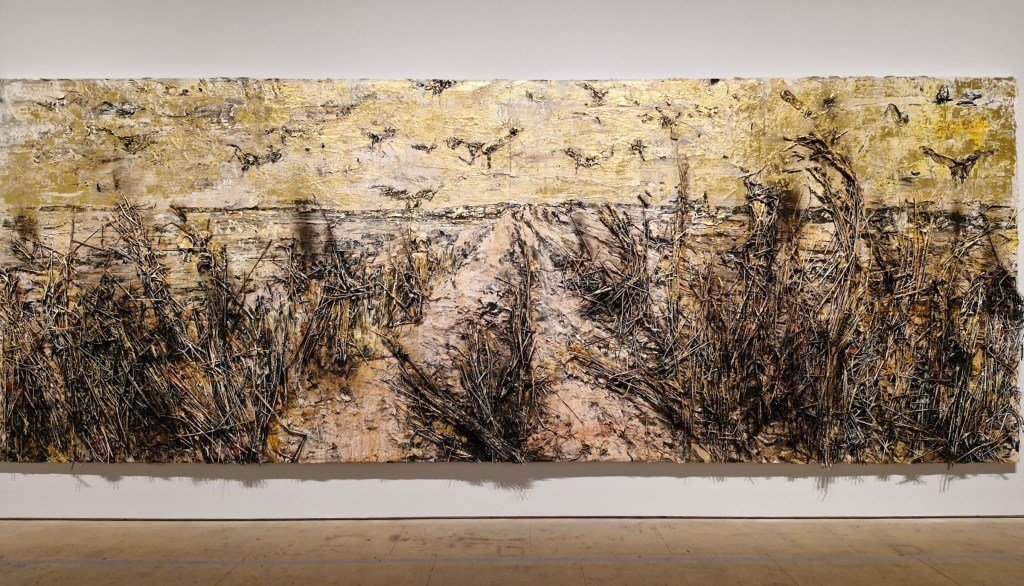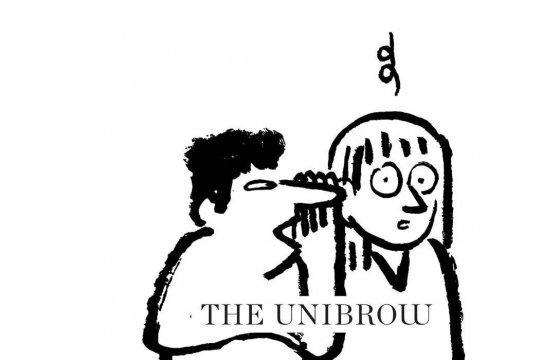

LONDON — Demonstrating “influence” between artists is a thorny enterprise. Side-by-side comparisons can often reveal how one individual or movement’s technical practice or iconography was taken up and/or further developed by another, furthering art historical progression — yet confirmation bias can underpin curatorial efforts, resulting in an optimistic assertion of direct influence where coincidence may be more at play.
Kiefer / Van Gogh at the Royal Academy faces a wholly different challenge: connecting two fundamentally different artists, one of whom professes to be influenced by the other. The show acknowledges the titular artists’ dissimilarity from the outset, with its first caption stating that “Kiefer’s monumental works may not appear to have much in common with van Gogh.” Fundamentally, Kiefer is more a sculptor, articulating enormous-scale impasto patterns and surface texture using straw and other detritus in monochrome sludge occasionally punctuated by gold, while van Gogh is, well, one of the most accomplished and technically individual painters — not to mention colorists — in art history. Kiefer, who was born in Germany just before the end of World War II and grew up in the shadow of the Holocaust, is concerned with the greatest matters of life and death, and is widely recognized by the art establishment. van Gogh’s concerns were smaller in scope and more personal — he made local landscapes and portraits while suffering from debilitating mental illness — and he received no recognition until after his death. And Kiefer’s few tiny line drawings compared to van Gogh’s skilled paintings indicate a significant gulf in draftsmanship capability between the two.

Though the 80-year-old giant of contemporary art is given equal listing in the title with the 19th-century post-Impressionist legend — the show is supported by White Cube, which happens to be exhibiting the former concurrently — the focus is squarely on the former’s adoration of the latter throughout his 60-year career. The show begins with the first travel grant Kiefer received as a student, which took him throughout the Netherlands, Belgium, Paris and Arles — what curators Julien Domercq and Natasha Fyffe call “following in van Gogh’s footsteps.” Rather than exploring “influence,” though, the exhibition is really about Kiefer, who just happens to really, really like van Gogh. For in the exhibition’s three galleries, the latter is short-changed: The full width of the walls in the first and last are dominated by Kiefer’s monumental pieces, which dwarf the single van Gogh work in each room: 1887’s “Piles of French Novels” and 1886’s “Shoes.”
The key to understanding “influence,” or more fittingly in the case of Kiefer’s relationship with van Gogh, “affinity” or “inspiration,” is through words more than pictures, particularly the former’s personal interpretations and responses. The caption for van Gogh’s humble shoes, for example, cites the contemporary artist’s thoughts: “This painting of well-worn shoes is for Kiefer a portrait of sorts in their owner’s absence, a relic of journeys past and at the same time a symbol of what is to come.” Again, the grandiosity of Kiefer’s concerns is at odds with the modest immediacy of van Gogh’s subjects, painted from the simple items around him.
Similarly, the curators make some attempt to link the two via iconography, specifically of the field, though these attempts are either generic or undermined yet again by fundamental differences in their perspectives. “For both artists, a painting of a field is not merely a view, wheat or earth, but is imbued with a deeper meaning,” the exhibition materials state — is this not the case for most artists? Indeed, the text itself admits their differences: “Kiefer believes a landscape also stands as a silent witness of human history, while for van Gogh it was a conduit to express intense feelings and emotions.”

The middle room is populated by paintings selected from van Gogh’s time in Arles, ostensibly to establish a kinship with Kiefer, who traveled there, through sense of place. We are told that the paintings here were “selected to speak to Kiefer’s sensibility”; such slippery wording suggests that the curators might have had to pull something together without his direct input. Curiously, this selection includes pieces like van Gogh’s portrait “L’Arlésienne” (1890), presumably only because he made it in Arles, as portraiture has never been a primary interest of Kiefer’s, or 1890’s “Snow-covered Field with a Harrow (after Millet),” an icy rendering of one of van Gogh’s 21 “versions” of Jean-François Millet’s works. Actually, could we have an exhibition on Millet / Van Gogh instead, please?
It is arguable that imparting a comprehensive understanding of van Gogh’s impact on Kiefer requires the presentation of large numbers of both of their work (even if so, it’d require more of van Gogh than is represented here) and the guidance of Kiefer’s words. Indeed, the captions quoting Kiefer’s thinking provide minimal insight: “In van Gogh, there is always something more, not in the sense of something extra or a bonus, the ‘something more’ is everything, the beyond-subatomic smallest that can no longer be represented and only grasped through mathematical abstraction as well as the biggest – beyond all light years.” Replace “van Gogh” with literally any artist, and these could be the words of a pretentious student explaining why X artist is just, like, the best ever, in a way you’ll never understand.
The catalog accompanying the exhibition contains more of Kiefer’s musings, combined with properly illustrated works by van Gogh that actually do the latter justice. Let’s face it, the Royal Academy was never going to get the Museum of Modern Art’s “Starry Night” (1889) to pair with Kiefer’s giant dried-pasta version. The result is that the catalog itself is far more informative — making the exhibition itself, curiously, rather redundant.



Kiefer / Van Gogh continues at the Royal Academy (Burlington House, London) through October 26. The exhibition was organized by the Royal Academy in close collaboration with the Van Gogh Museum, Amsterdam, and was curated by Julien Domercq and Natasha Fyffe.


